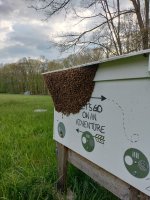LittleBittyBigJohn
Veteran Member
I've searched around and it doesn't look like there are any active threads on beekeeping. Do any of you keep bees? I am going to try my hand at it, starting next year. I will get my supplies ready over the winter and have it all set up before spring so I can be ready for a nuc as soon as I can get one. I'm open for any pointers, location, site prep, equipment suggestions etc. Also, not sure if it's allowed to cross link to other forums... If so, are there any beekeeping specific forums that are recommended?
I'm in central Arkansas on about 11 acres, so I should have plenty of room. Lots of trees around and semi rural.
I'm in central Arkansas on about 11 acres, so I should have plenty of room. Lots of trees around and semi rural.

